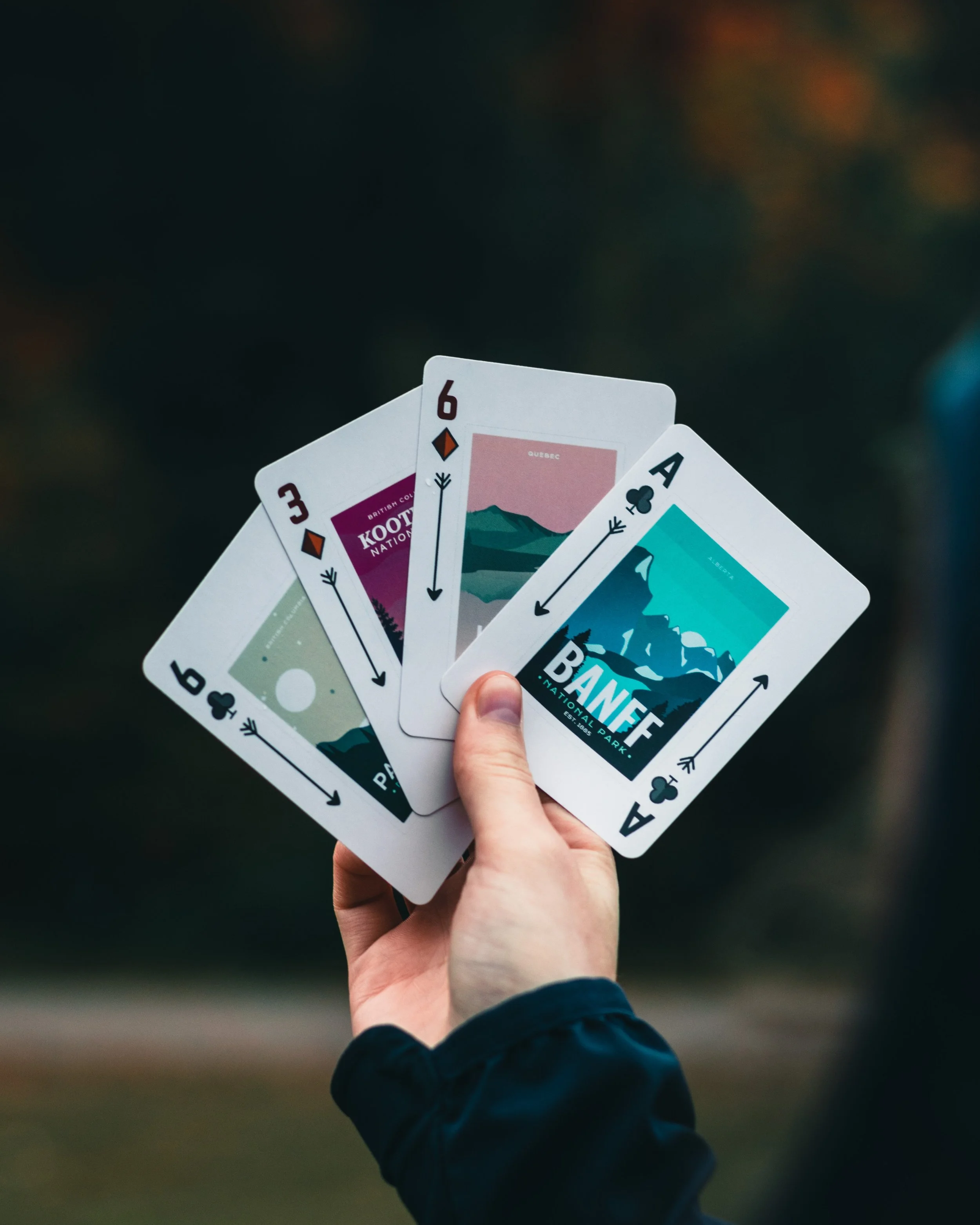Oh No 99!
Almost a decade ago in a math PD I learned about a game called Oh No 99. Since then I’ve modeled it in classrooms when I was a curriculum coach, written it into a statewide PD in the State of Florida and played it with countless students in tutoring and even my own children. This game is easy to learn, inexpensive and a great way to meaningfully practice math fluency skills.
All you need to play are the directions and a deck a cards. That’s it. You can increase the engagement and appeal with some novelty like giant 5x7 playing cards or even themed playing cards. For example, my son is obsessed with Minecraft right now so I bought Minecraft playing cards to increase engagement.
How Do You Play?
Each player receives four cards and the rest of the cards are placed face down in the middle of the players.
Players take turns placing cards face up and calculating the total value of their card and the other cards previously played. For example, player one plays a 10 card and says “10”. Player two plays a 5 card and says, “15”. Player three plays an 8 card and says, “23.” They are continually calculating a running total.
When a card a played, the player gets another card from the face down deck so that he/she always has 4 cards to choose from in his/her hand. Play continues until one or more players are forced to go over 99.
📸 credit Ali Kazal via Unsplash
Card Values and Operations
Aces: add 1
Jacks: subtract 10 (with students who have learned integers you can just call this negative ten)
Queens: wild card that can represent the value of any other card in the deck
Kings: add 0
All others (2-10): add face value of the card
You can download a copy of the directions here. These can be printed and laminated for ease of use with students.
Why Oh No 99?
This is great for working on mental math. Students are asked to add and subtract while using strategy. For example if the running total is at 34 and a player has a 6, 10, K and 4 in his/her hand, the player has several options and observing the choice and strategy can give great insight into where a student is at. If they play the 6 and say “40” immediately, it is likely they were using the make a 10 strategy as they know 4 + 6 =10. They may use the 10 and say “44.” In this case it is interesting to see if they knew to add on 1 to the tens place, or did they count 10 fingers? Are they employing a strategy of using the greatest number card while they can? If they play the K (worth zero) perhaps they do not fully grasp the strategy aspect of the game, or they were looking for easy addition. Students get the opportunity to practice in a more engaging and authentic way than fact drill sheets and educators/parents are able to observe some key mathematical behaviors.
Meeting the Needs of All Students
There are several strategies that you can employ to help ensure that the game is accessible to all students. Here are just a few:
Make the game Oh No 49! for younger or struggling students. (You can even remove larger value cards from the deck such as 7, 8, 9).
Give students a hundred chart or a 99 chart so they can track the running total and mark it on their chart.
Give students a dry erase board so they can compute using previously learning strategies that aren’t quite mastered.
Use giant 5x7 playing cards for students struggling with fine motor skills or who need larger print.
I’d love to know what other ideas you have for adapting and differentiating the game!
Expand the Learning
Take this game a step further by asking students to articulate either verbally or in a journal the overall game strategy that they used and why.
Have students indicate which computation strategies they used, such as pretend a ten, make a ten, doubles, doubles plus one, breaking apart a number, etc.
Have students debate the effectiveness of different strategies within the game.

